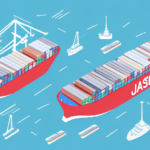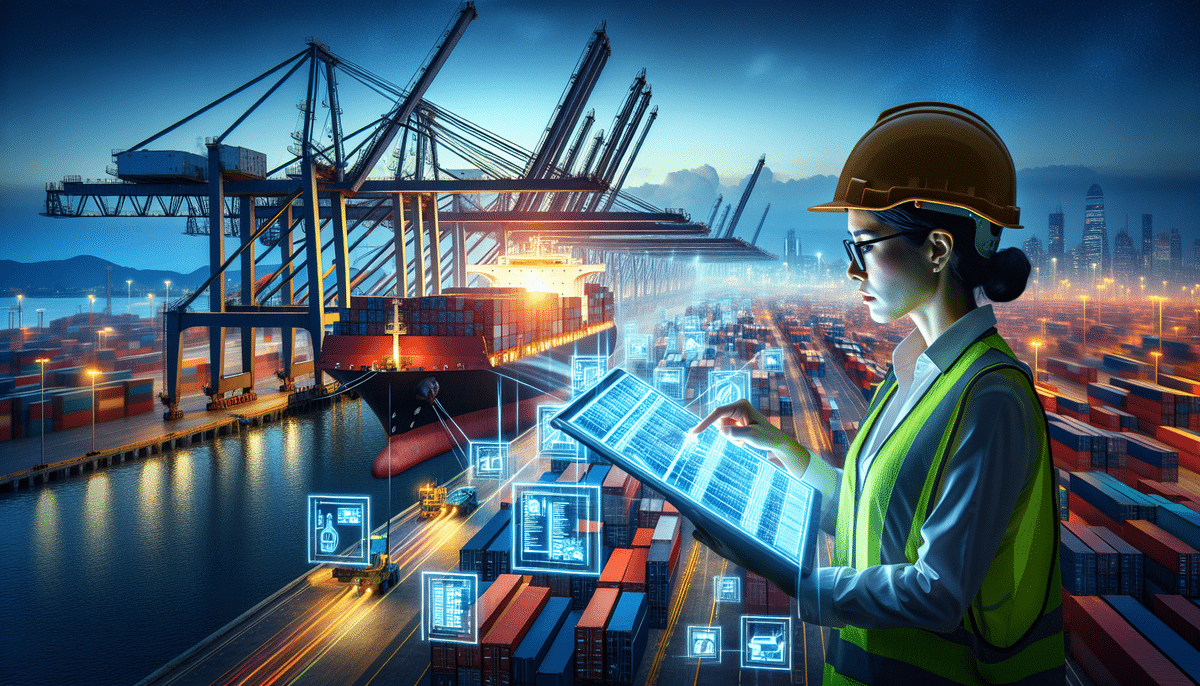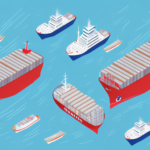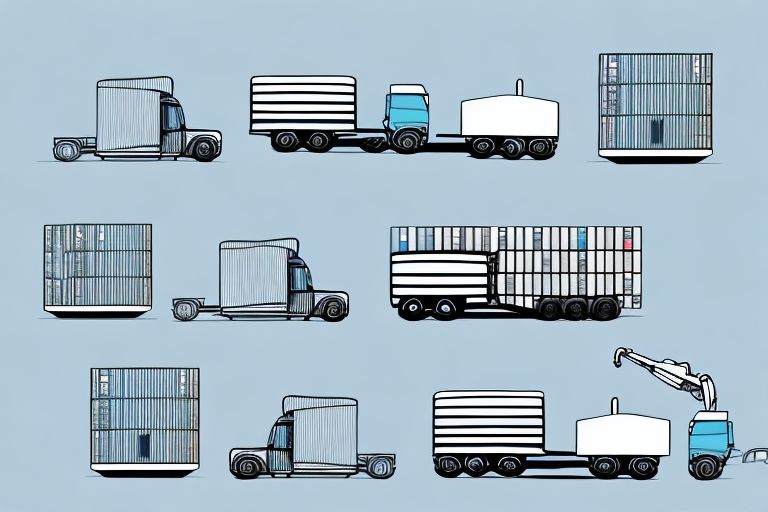Understanding the TEU (Twenty-Foot Equivalent Unit) and Its Impact on Global Trade
The TEU (Twenty-Foot Equivalent Unit) is a standard unit of measurement used in international shipping to quantify the volume of containerized cargo. The adoption of TEU has transformed the shipping industry by enabling the efficient handling, transport, and storage of goods. This article delves into the history and evolution of TEU, its benefits, its role in the expansion of global trade, technological innovations influencing TEU standards, and future prospects.
The History and Evolution of TEU in International Shipping
Containerization emerged in the 1950s as a solution to streamline the loading and unloading of cargo, expedite transportation, and minimize damages, theft, and losses. Initially, containers varied in size, complicating the quantification of cargo volumes. In 1968, the International Organization for Standardization (ISO) standardized container sizes, establishing the 20-foot (6.1 meters) container and introducing the concept of TEU. This standardization enabled accurate quantification of cargo volumes and enhanced shipping statistics tracking.
The introduction of TEUs revolutionized the shipping industry by standardizing container sizes and fostering the development of container ships. Modern container ships are meticulously designed to carry specific numbers of TEUs, leading to the creation of larger and more efficient vessels. This standardization has significantly facilitated the growth of global trade, making the transportation of goods across vast distances more cost-effective and reliable.
As of 2023, the largest container ships can carry over 24,000 TEUs, reflecting the continuous growth in shipping capacity. The utilization of TEUs has also driven innovations in container handling equipment, including advanced cranes and automated forklifts, enhancing the efficiency of loading and unloading operations.
How TEU Became the Standard Unit of Measurement for Containerized Cargo
The widespread adoption of TEU as a standard unit of measurement was influenced by several key factors:
- Standardization of Container Sizes: The establishment of uniform container dimensions by ISO eliminated discrepancies in cargo measurements.
- Advancements in Tracking and Management Systems: Modern logistics systems enabled precise tracking and management of containerized cargo.
- Proliferation of Container Ships: The rise of container shipping services necessitated a standardized measurement to optimize vessel capacity.
Prior to TEU, cargo was measured using disparate metrics such as weight, volume, and item count, leading to inefficiencies and inaccuracies in cargo handling and transportation. The introduction of TEU streamlined these processes, enabling shippers to accurately calculate the space required for their cargo and allowing carriers to optimize vessel loading and transport operations.
The Benefits of Using TEU to Measure Shipping Volumes
Adopting TEU as the standard unit of measurement offers numerous advantages to the shipping industry:
- Improved Cargo Handling: Standardized measurements facilitate smoother loading and unloading processes.
- Higher Efficiency: Optimized vessel loading enhances operational efficiency and reduces turnaround times.
- Lower Transportation Costs: Economies of scale achieved through larger container ships lead to reduced per-unit transportation costs.
- Reduced Damage and Loss Rates: Standardization minimizes handling errors, decreasing the likelihood of cargo damage or loss.
Furthermore, TEU allows for seamless comparison of shipping volumes across different ports and vessels, enabling companies to assess operational efficiency and identify improvement areas. This standardization also promotes data sharing among stakeholders, including shippers, carriers, and terminal operators, fostering collaboration and enhancing overall supply chain management.
The move towards larger container ships, some accommodating over 24,000 TEUs, has achieved significant economies of scale. However, this trend also raises concerns regarding the environmental impact and the logistical challenges associated with operating such massive vessels. Addressing these concerns is critical for sustainable growth in the shipping industry.
The Role of TEU in the Growth and Development of Global Trade
TEU has been instrumental in expanding global trade by making containerized shipping more efficient and cost-effective. The standardization of container sizes and measurement units has streamlined supply chain operations, leading to increased trade volumes and higher profit margins for businesses worldwide.
According to the United Nations Conference on Trade and Development (UNCTAD), global container shipping volumes reached approximately 800 million TEUs in 2022, reflecting the integral role of TEU in facilitating international commerce. The optimization of container space has also contributed to a reduction in carbon emissions per unit of goods transported, promoting more sustainable trade practices.
By enabling efficient space utilization, TEU reduces the number of ships required for transporting goods, thereby decreasing fuel consumption and greenhouse gas emissions. This optimization aligns with global initiatives aimed at mitigating the environmental impact of shipping and promoting sustainable development.
How TEU Helps Shipping Companies Optimize Their Operations and Maximize Profits
The TEU metric empowers shipping companies to optimize operations and enhance profitability in several ways:
- Accurate Cargo Volume Measurement: Precise TEU calculations enable efficient utilization of vessel capacity, reducing empty container voyages.
- Cost Reduction: Optimized container loading lowers transportation costs by maximizing space utilization.
- Efficient Vessel Scheduling: Accurate TEU data informs optimal vessel deployment schedules, minimizing idle times and improving fleet utilization.
- Inventory Management: Enhanced cargo volume tracking facilitates better inventory control and reduces holding costs.
Moreover, real-time TEU tracking systems provide shipping companies with visibility into cargo movements, enabling proactive decision-making regarding routing and delivery scheduling. Advanced data analytics tools leverage TEU data to identify operational inefficiencies and guide strategic improvements.
From an environmental standpoint, optimizing vessel schedules and speeds based on TEU data allows shipping companies to reduce fuel consumption and associated carbon emissions. Additionally, the adoption of eco-friendly containers and sustainable packaging materials further diminishes the environmental footprint of shipping operations.
The Impact of TEU on Port Infrastructure and Logistics Planning
The adoption of TEU as a standard measurement has significantly influenced port infrastructure and logistics planning:
- Port Layout Optimization: Standardized container sizes facilitate efficient port layout designs, improving container flow and reducing congestion.
- Container Stack Capacity: Accurate TEU measurements inform the stacking capacity of containers, enhancing storage efficiency.
- Cargo Handling Equipment: Procurement of specialized equipment, such as high-capacity cranes and automated guided vehicles (AGVs), is guided by TEU data.
- Resource Management: TEU insights enable precise resource allocation, ensuring optimal utilization of port facilities.
Furthermore, TEU standardization enhances intermodal transportation efficiency by enabling seamless container transfers between ships, trucks, and trains. This interoperability reduces the need for repackaging, lowers transportation costs, and enhances supply chain reliability. As global trade continues to expand, the role of TEU in port and logistics planning remains pivotal in accommodating increasing cargo volumes and maintaining operational efficiency.
Innovations in Shipping Technology and Their Influence on TEU Standards
Technological advancements are continuously shaping the shipping industry's approach to TEU standards:
- Blockchain Technology: Enhances the security and transparency of shipping transactions, facilitating smoother TEU tracking and management.
- Internet of Things (IoT): IoT sensors embedded in containers provide real-time data on cargo conditions and locations, improving TEU monitoring and reducing theft or loss risks.
- Artificial Intelligence (AI): AI-driven analytics optimize TEU utilization, predictive maintenance of container handling equipment, and route optimization.
- Autonomous Ships: Equipped with advanced navigation and sensor systems, autonomous ships can improve TEU transportation efficiency and safety while reducing human error.
Additionally, the shipping industry's focus on sustainability is driving innovations such as hydrogen fuel cells and wind-assisted propulsion systems. These technologies aim to reduce the carbon footprint of shipping operations, align with global environmental standards, and promote sustainable growth within the TEU framework.
For instance, companies are experimenting with wind-assisted propulsion systems that harness renewable energy to power ships, thereby lowering fuel consumption and emissions. These technological innovations are critical in evolving TEU standards to meet the demands of a rapidly changing global trade landscape.
Challenges Facing the Adoption of TEU in Emerging Economies
While TEU offers substantial benefits, its adoption in emerging economies encounters several challenges:
- Inadequate Port Infrastructure: Limited investment in port facilities hampers the efficient handling and storage of TEUs.
- Limited Access to Containerized Cargo: Smaller economies may struggle to attract container shipping services, reducing TEU utilization.
- Regulatory Barriers: Complex government regulations can impede the adoption and standardization of TEU practices.
- Financial Constraints: Limited financial resources may restrict investments in container handling equipment and port infrastructure.
- Expertise and Knowledge Gaps: A lack of skilled personnel to manage container terminals efficiently can hinder TEU adoption.
Addressing these challenges requires collaborative efforts between shipping operators, governments, and international organizations to enhance infrastructure, streamline regulations, and provide financial support for TEU integration. Establishing global standards for container sizes and types is also essential to mitigate inefficiencies and reduce costs associated with non-standardized measurements.
Environmental considerations add another layer of complexity, as increased containerization can lead to higher carbon emissions from transportation and handling. To mitigate these impacts, stakeholders are exploring sustainable transportation methods, such as rail and inland waterways, and adopting alternative energy sources to reduce the environmental footprint of TEU operations in emerging economies.
The Future of TEU in the Changing Landscape of Global Trade
The future of TEU in the shipping industry is poised for growth and transformation, driven by several key factors:
- Globalization of Trade: As international trade continues to expand, the demand for efficient containerized shipping will sustain the importance of TEU.
- Sustainability Initiatives: Increasing emphasis on eco-friendly shipping practices will shape TEU standards to incorporate sustainable measures.
- Technological Advancements: Innovations in shipping technology will enhance TEU tracking, management, and utilization.
- Collaborative Efforts: Partnerships between shipping companies, governments, and industry stakeholders will facilitate the adoption of TEU in emerging economies and support global trade growth.
Emerging technologies, such as AI and IoT, will further optimize TEU usage, enabling more precise cargo handling and reducing operational inefficiencies. Additionally, advancements in sustainable shipping technologies will align TEU practices with global environmental goals, ensuring that the growth of containerized shipping contributes to a greener economy.
Collaborative initiatives aimed at standardizing TEU practices internationally will promote uniformity and efficiency in global shipping operations. These efforts will be crucial in addressing the logistical challenges of increasing trade volumes and ensuring that TEU remains a vital metric in the evolving landscape of global commerce.
In conclusion, the TEU has fundamentally transformed the shipping industry, enabling the efficient handling and transport of cargo and fostering the growth of global trade. The standardization of container sizes and the use of TEU as a measurement unit have yielded significant benefits, including enhanced efficiency, reduced costs, and increased profitability for shipping companies. As the industry continues to evolve with technological advancements and a focus on sustainability, TEU will remain a cornerstone of global trade, driving further innovations and enabling continued economic growth.








